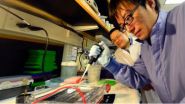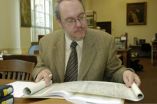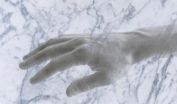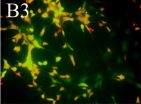(Press-News.org) AUGUSTA, Ga. - A protein known to promote cancer appears to give the blood vessels strength and shape, researchers report.
When yes-associated protein, or YAP, is deleted from vascular smooth muscle cells during development, the protein makes thin-walled blood vessels that over-dilate in response to the usual pressure of blood flow, said Dr. Jiliang Zhou, vascular biologist at the Medical College of Georgia at Georgia Regents University.
"The thickness of the arterial wall decreases from three or four layers of smooth muscle cells to one or two layers," said Zhou, corresponding author of the study featured on the cover of the American Heart Association journal, Circulation Research.
The researchers also found that YAP appears to manage vascular smooth muscle cells by controlling expression of the cell cycle arrest gene, Gpr132. During growth, YAP suppresses this suppressor then, when blood vessels walls are the right size, YAP expression decreases and Gpr132 expression increases.
"The balance shifts," Zhou said. When the scientists deleted YAP in mice, Gpr132 expression increased and cell proliferation decreased. Conversely, knocking down Gpr132 expression increases vascular smooth muscle cell proliferation.
The study required deleting YAP from both vascular smooth muscle cells and heart cells – technology does not enable more selective removal – so the mice also were born with significant heart defects, confirming the protein's key role in heart formation. YAP's absence has been shown to cause, for example, ventricular septal defects, a common congenital heart defect in which a persistent hole between the right and left ventricle can lead to heart failure.
The mice in this study died shortly after birth from significant heart and vascular defects. Zhou suspects that less severe alterations in YAP may also produce aneurysms, weak points in the vascular system that often go undetected before rupturing, with benign to lethal results depending on their size and location. He and his colleagues are working on a method to selectively manipulate YAP levels in smooth muscle cells to further pursue their role in aneurysms and, ideally, find a way to easily identify and treat them.
"If you completely disrupt YAP function, you are not going to survive," Zhou said. "But you also may experience a dose-dependent defect so your arterial walls are thinner and you can survive development but may be prone to aneurysms as an adult."
showed that YAP plays a role in the re-narrowing, or restenosis, of the carotid artery after treatment to avoid a stroke. Those studies were published in the AHA journal Arteriosclerosis, Thrombosis, and Vascular Biology.
They found that physical injury resulting from inserting a catheter to clear the artery then inserting a stent to help keep the artery open led to YAP-mediated creation of new plaque over just two weeks in rats, which likely translates to a couple of years in humans.
"It's a double-edged sword. You remove the plaque but you somehow create the new stress to the tissue and the smooth muscle cells respond by building plaque again," Zhou said. Coating stents with drugs such as rapamycin, an immunosuppressive drug given to kidney transplant patients, appears to reduce or at least delay restenosis.
Zhou is working with Dr. Alvin V. Terry Jr., Chairman of the MCG Department of Pharmacology and Toxicology, to develop an anti-YAP drug that could provide another layer of protection. He's also working with MCG Vascular Surgeon Gautam Agarwal to look at carotid artery plaque removed from patients to see if YAP, along with known culprits such as a high-fat, high-cholesterol diet, also has a role in its initial formation. YAP's role in restenosis prompted Zhou to explore its role in normal blood vessel wall formation.
Zhou noted that YAP likely plays a similar role in blood vessel formation throughout the body and he suspects it also has a role in endothelial cells, which comprise the innermost layer of blood vessels. YAP is also known to help determine organ size; in fact, when it's overexpressed in, for example, the liver for only a week, the organ can grow five times its usual size.
Because of YAP's varying roles. drugs to control it will require localized delivery, which is another reason Zhou likes the idea of coating stents. YAP was originally identified in the fruit fly.
INFORMATION:
GRU Postdoctoral Fellow Yong Wang is the study's first author. The research was funded by the National Institutes of Health.
Protein called YAP gives blood vessels strength, shape
2014-03-24
ELSE PRESS RELEASES FROM THIS DATE:
From mouse ears to man's?
2014-03-24
One in a thousand children in the United States is deaf, and one in three adults will experience significant hearing loss after the age of 65. Whether the result of genetic or environmental factors, hearing loss costs billions of dollars in healthcare expenses every year, making the search for a cure critical.
Now a team of researchers led by Karen B. Avraham of the Department of Human Molecular Genetics and Biochemistry at Tel Aviv University's Sackler Faculty of Medicine and Yehoash Raphael of the Department of Otolaryngology–Head and Neck Surgery at University of ...
Guarding grapes and other tales from papyri
2014-03-24
If you weren't careful, you might end up beaten by grape thieves skulking in the darkness.
A University of Cincinnati graduate student writes about the contractual obligations of vineyard guards and researchers from around the world contribute more stories from ancient times in the most recent volumes of the Bulletin of the American Society of Papyrologists (BASP).
UC's Peter van Minnen, associate professor of classics, has edited the international journal since 2006. BASP is an annual collection of articles and reviews pertaining to important discoveries from around ...
Lots of carbon dioxide equivalents from aquatic environments
2014-03-24
Large amounts of carbon dioxide equivalents taken up by plants on land are returned to the atmosphere from aquatic environments. This is the conclusions from a study carried out by two students at Linköping University, Sweden.
As students at the Master program Science for Sustainable Development in Linköping, Bala Panneer Selvam and Sivakiruthika Natchimuthu, did a thorough investigation of greenhouse gas emissions from many types of inland waters in India under supervision by Dr Lakshmanan Arunachalam, Tamil Nadu Agricultural University, India, and Dr David Bastviken, ...
A towel less: How psychologists harness sociability to cut waste
2014-03-24
Hotel guests can be gently persuaded to reduce the number of towels they use each day, psychology researchers at the University of Luxembourg have found. With fewer towels to wash, this reduces the waste of water, energy and detergent. This is good news for the environment and it cuts costs, so enabling hotels to reduce prices.
Two hotels in Swiss and Austrian ski resorts helped with an experiment in early 2013. Three different signs were placed separately in different bathrooms, all of which gently reminded guests of the environmental impact of towel use. However, one ...
Microfluidic device with artificial arteries measures drugs' influence on blood clotting
2014-03-24
A new microfluidic method for evaluating drugs commonly used for preventing heart attacks has found that while aspirin can prevent dangerous blood clots in some at-risk patients, it may not be effective in all patients with narrowed arteries. The study, which involved 14 human subjects, used a device that simulated blood flowing through narrowed coronary arteries to assess effects of anti-clotting drugs.
The study is the first to examine how aspirin and another heart attack prevention drug respond to a variety of mechanical blood flow forces in healthy and diseased arteries. ...
Would you believe your hand could turn into marble?
2014-03-24
This news release is available in German.
The study was published in the international scientific journal PLOS ONE on 13 March 2014.
To induce an illusory perception of the material properties of the hand, a group of neuroscientists from Bielefeld University, the Max-Planck Institute for Biological Cybernetics (Germany), and the University of Milano-Bicocca (Italy) asked volunteers to sit with their hands lying on a table in front of them. They repeatedly hit the participants' right hands gently with a small hammer while replacing the natural sound of the hammer ...
Hot nanoparticles for cancer treatments
2014-03-24
This news release is available in German. If you put your hand over a switched-on torch in the dark, it appears to glow red. This is because long-wavelength red light beams penetrate human tissue more effectively than short-wavelength blue light. ETH Zurich researchers exploit this fact in a new kind of nanoparticles: so-called plasmonic particles, which heat up when they absorb near-infrared light. This could enable them to kill tumour tissue with heat, for instance.
Gold is a popular material for nanoparticles used therapeutically, as it is well tolerated and ...
Nature Immunology study finds novel population of neutrophils
2014-03-24
Case Western Reserve University researchers have discovered a novel population of neutrophils, which are the body's infection control workhorses. These cells have an enhanced microbial killing ability and are thereby better able to control infection.
Neutrophils, the body's most abundant type of white blood cells, have long been regarded as first responders that kill fungi, bacteria, and other pathogens. In a study published in the February issue of Nature Immunology, Case Western Reserve researchers explain that they have found the mechanism of action of a newly discovered ...
GDNF transfection promotes neuronal differentiation of bone marrow mesenchymal stem cells
2014-03-24
Studies have shown that the differentiation rate of grafted bone marrow mesenchymal stem cells into mature neuron-like cells is very low. Therefore, it is very important to establish an effcient and stable induction protocol to promote the differentiation of bone marrow mesenchymal stem cells into neuron-like cells in vitro and elucidate the mechanisms underlying differentiation for the treatment of central nervous system diseases. Jie Du and colleagues from Sichuan University in China found that glial cell line-derived neurotrophic factor/bone marrow mesenchymal stem cells ...
Electroacupuncture effect on depression and variation of polygenes expression
2014-03-24
Preliminary basic research and clinical findings have demonstrated that electroacupuncture therapy exhibits positive effects in ameliorating depression. However, most studies of the underlying mechanism are at the single gene level; there are few reports regarding the mechanism at the whole-genome level. Using a rat genomic gene-chip, Dr. Dongmei Duan and co-workers from General PLA Hospital in China profiled hippocampal gene expression changes in rats after electroacupuncture therapy. Electroacupuncture therapy alleviated depression-related manifestations in the model ...




